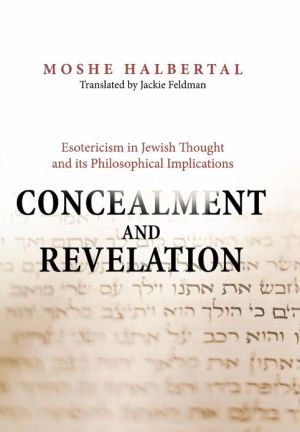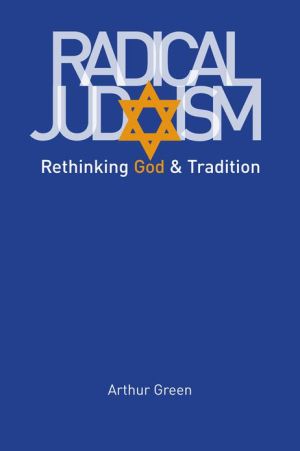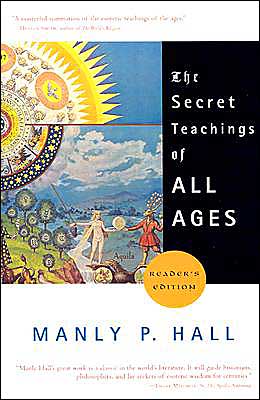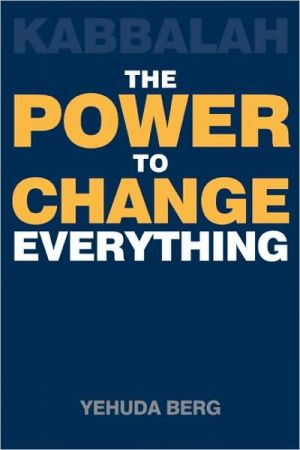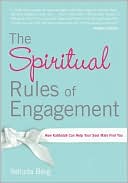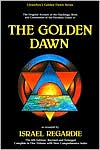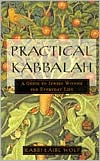Concealment and Revelation: Esotericism in Jewish Thought and its Philosophical Implications
During the twelfth and thirteenth centuries, great new trends of Jewish thought emerged whose widely varied representatives—Kabbalists, philosophers, and astrologers—each claimed that their particular understanding revealed the actual secret of the Torah. They presented their own readings in a coded fashion that has come to be regarded by many as the very essence of esotericism. Concealment and Revelation takes us on a fascinating journey to the depths of the esoteric imagination. Carefully...
Search in google:
"Moshe Halbertal's book will be a revelation to anyone interested in religious, philosophical, psychological, or political concealment. It has wide implications for the political craving for transparency, and dazzling insights into depth psychology (such as Freud's) and esoteric tendencies in philosophy (such as Wittgenstein's). The book manifests not only immense learning and virtuosity in reading Jewish texts but also genuine wisdom."--Avishai Margalit, Institute for Advanced Study"Halbertal's virtuosic exploration of a major dimension of medieval Jewish thought opens new vistas in Jewish philosophy and mysticism."--Moshe Idel, Hebrew University of Jerusalem"This is the most conceptually penetrating book that I can imagine on concealment and revelation in premodern Jewish thought. An original foray into a subject that has not been well developed, it has the makings of a classic. In particular, the essay on esotericism is rich and substantial. There can be no question of the book's brilliance."--Noah Feldman, author of Divided by God"Original, consistently interesting, and thought-provoking. This book exhibits the author's knack for synthesizing complicated technical material with clarity and verve, and making it accessible to both scholars in adjacent fields and to general readers."--Bernard Septimus, Harvard University"This book's taxonomy of esoteric knowledge and attempt to establish its importance both as a thing in itself and as an object of study are absolutely fascinating and indeed captivating. The book made an important aspect of medieval Jewish intellectual and spiritual life much less forbidding to me than it had been before, and it should make similar bodies of esoteric knowledge and esoteric movements--like late antique gnosticism and late medieval Christian mysticism--more approachable also."--William Chester Jordan, Princeton University Dov Schwartz - Journal of Religion Halbertal's book outlines a challenging theory in the intellectual history of Jewish creativity. He does not rely on new material but offers a superb interpretation of available material. This book undoubtedly represents a major contribution to the discourse on the character and the varieties of ancient and medieval Jewish thought.
Concealment and Revelation Esotericism in Jewish Thought and its Philosophical Implications \ \ By Moshe Halbertal Princeton University Press \ Copyright © 2007 Princeton University Press\ All right reserved.\ ISBN: 978-0-691-12571-8 \ \ \ Introduction Esoteric teachings form a body of knowledge whose dissemination is severely restricted. These restrictions are meant to carefully filter the listening public in the case of oral transmission, and to impose limits on copying and circulation, and later on the printing, of the written word. As a result of these restrictions, complex strategies of encoding and double speech and writing were developed, which enabled the transmission of secret information to the worthy elect, without preliminary filtering of the congregation of listeners or readers. Esotericism as a general attitude, in distinction from actual esoteric practice, is a tendency to view canonical texts, social phenomena, or even individual behavior as a form of coded manifestation that intentionally conceals something deeper and more meaningful that only the few can decipher. In that respect esotericism as an interpretative outlook reflects a consciousness of the existence of something concealed and hidden, whose knowledge or experience is of decisive or even redemptive import; this consciousness is expressed through a wide variety of conceptions. What the variations of esoteric consciousness have in common is the assumption that, behind what is revealed, there exists a purer, deeper, and truer level ofmeaning. Consequently, esoteric teachings express varying levels of alienation from the surface of existence, from revealed religion or from the external aspects of human behavior. At the most alienated pole of the esoteric conception stands the Gnostic position, which sees human beings as hostages of an evil, scheming demiurge; it offers esoteric knowledge of the existence of a foreign and pure god, external to the universe. This knowledge liberates humans from their bondage. While not all esoteric structures create such a severe tension between the revealed and the hidden, the basic position of distance and alienation is common to all of them. Opposed to the alienated, Gnostic esotericism, we find positions that view the esoteric not as a substitute for the domain of the revealed, but as a kind of deeper understructure for it, which endows the revealed surface with meaning. In these conceptions, the revealed surface of existence, the sacred scriptures, and, sometimes, human behavior as well become symbolic structures that designate and signify something concealed that lies beneath them. \ The esoteric mentality is embodied in various forms of thought. It appears in theological and magical contexts, in which hidden knowledge of the godhead and the universe are transmitted, or else as a method of exegesis of canonical works disclosing an encoded level of meaning. Esotericism also has a secular form, in which it serves as the basis for sociopolitical explanations, which assume that nothing is as it appears, and that society is, in fact, governed by secret organizations pulling on hidden strings. In its political contexts, the esoteric mentality is a breeding ground for a multitude of conspiracy theories, which assume hidden centers of power behind what appear to be individual, unrelated actions. The psychoanalytic conception, which maintains that a repressed, guarded region of consciousness guides people's actions, is also a complex instance of the esoteric conception.\ The remarkably varied structure of esoteric knowledge includes multiple complex techniques for approaching the hidden: the adoption of a precise and strict method of thought in order to penetrate the deep metaphysical structure of being, entering alternative states of consciousness to facilitate insights from other planes, the use of various magical techniques, the interpretation of dreams and their analysis for the purpose of revealing the repressed level of the self in order to overcome internal censorship, and many, many others.\ Some theories on the universe or on society are extremely remote from the revealed surface of things. Examples include modern physics, which postulates the existence of particles which have never been observed, or Marxism, which maintains that the ideological and economic structure of society is determined by the level of development of the means of production. Yet the enormous gap between these theories and what is revealed on the surface is not sufficient for them to be considered esoteric teachings. In addition to the existence of such gaps, esoteric conceptions claim that the existence of the esoteric is dependent on intentional concealment and camouflage (which does not hold true, for example, in the case of modern physics), or that essentially the esoteric may only be expressed through indirect symbols. We might say that what is common to all types of esotericists is the metaphor of the key. Esotericists do not understand, interpret, and explain; rather, they open, decipher, liberate or expose.\ Naturally, strictly esoteric traditions were not written down at all. Oral transmission enables control over the identity of the receivers and constant supervision over what is revealed and clarified through the medium of conversation. Writing, even if in veiled form, is a relaxation of the strictest restrictions of esotericism. One who writes down his words seeks to transcend the gaps of space and time between himself and his readers, who are not his immediate conversational partners. Once the words have been committed to writing, he may no longer restrict access to them, unless he took care to write in a veiled or hidden fashion. The Midrash utilizes the distinction between the written and the spoken in the context of the anti-Christian polemic, in order to explain the existence of the Oral Law:\ Rabbi Yehuda bar Shalom said: Moses requested that the Mishna too be given in writing, but the Holy One, blessed be He, foresaw that the nations would translate the Torah and read it in Greek and say, "We are Israel." The Holy One, blessed be He, said to Moses, "I shall write him most of my Torah," and thus "they shall be considered as strangers" (Hosea 8:12). Why should He do this? Because the Mishna is the mysterion of the Holy One, blessed be He, and the Holy One, blessed be He, divulges his mysterion to the righteous alone, as it is written (Psalms 25:14), "The secret of God is for those who fear Him." (Midrash Tanhuma, Vayera, 5)\ The translation of the Written Torah is described in this passage as an act of usurpation of an exclusive relationship-a kind of theological and literary theft committed by Christianity. Avoidance of writing down the Mishna, which is called "The Holy One, blessed be He's mysterion," ensures the exclusivity of Israel as God's chosen ones and confidants. Besides the link forged by the Midrash, between esotericism and oral transmission, this passage illustrates another important element of esotericism-the link between esotericism and status. The restrictions on the dissemination of knowledge, and the relation between knowledge, status, and power give esotericism an important role in determining social stratification. Esotericism is, among other things, a means of protecting the privileged position of a group in the society by limiting the dissemination of the knowledge that endows it with its status.\ For many of its devotees, esotericism is as well a way of protecting the multitude or the uninitiated from the destructive power of truth. At the root of the elitist political esoteric outlook, as Leo Strauss developed it, is the idea that social order will collapse under complete conditions of transparency. Plato's Seventh Letter is the foundational text of the esoteric obligation on the philosophers. The letter represents an argument against the explicit and clear writing of philosophical matters which ought to be restricted only to the initiates. If philosophy is the love of truth as a way of life, it must go underground since it poses a serious threat to the social order which is inherently established on myth. The harsh lesson that was drawn from the fate of Socrates is that the Polis would not tolerate public undermining of its accepted myths, and the philosopher is advised to carve a hidden space in which he can pursue truth without undermining the social structure and without endangering himself. The problem of transparency extends beyond the political structure and institutions to the self. It might be argued that not only social order and institutions will collapse under complete conditions of transparency, but the self will be undermined if it becomes completely transparent to itself. After all, repression and its relative self-deception are necessary forms of self-maintenance. It is no wonder that Freud draws on the analogy between censorship in the social and political context, and the workings of the internal censor who blocks from consciousness distressful mental material. After explicating the function of the internal censor in distorting the wishful contents of dreams, Freud makes the following claim:\ A similar difficulty confronts the political writer who has disagreeable truths to tell to those in authority.... A writer must beware of the censorship, and on its account he must soften and distort the expression of his opinion. According to the strength and sensitivity of the censorship he finds himself compelled either merely to refrain from certain forms of attack, or to speak in allusions in place of direct references, or he must conceal his objectionable pronouncement beneath some apparently innocent disguise; for instance, he may describe the dispute between two Mandarins in the Middle Kingdom, when the people he really had in mind are officials in his own country.\ Veiling is therefore a constant, necessary feature of our limited and imperfect social and psychological condition. It is no wonder that in the history of esoterically minded ideologies, redemption is conceived to be the achievement of transparency, both within mystical tradition, but also within psychoanalytic conception of health and harmony. (It is worthwhile noting that the word apocalypse means unveiled or revelation.)\ This book seeks to achieve a dual aim: the first is historical and cultural, and the second conceptual and philosophical. The historical and cultural focus aims to examine the phenomenon of esoteric teaching in Jewish medieval tradition in the twelfth and thirteenth centuries in its cultural and social contexts. The attention devoted to this particular period through the prism of esotericism is no accident, since the idea of the esoteric in Jewish tradition blossomed in this period. The main streams in Jewish thought in this period-philosophy, Kabbalah, astrology, and magic-presented their positions as the expression of the authentic Jewish esoteric tradition. The major writings of this period were consecrated to expounding the esoteric level of Jewish tradition; as such, they too were written as texts of an esoteric nature, and so concealed, to some extent, their internal meaning. The second focus of this book, the conceptual and philosophical, aims to extrapolate from the wealth of the historical material a taxonomy of the esoteric phenomena, and structural features and paradoxes that are implicit in it. Disclosing these features will help to illuminate esotericism as a general philosophical concern as it stands at an interesting intersection of hermeneutics and political theory. The relevance of esotericism to hermeneutics and political theory stems from both its presumed role in reading and interpreting texts, and from its reflecting a basic mode of power and its relationship to truth.\ In line with these dual aims, the first (and larger) portion of the book is devoted to a detailed analysis of the medieval Jewish case of esotericism, while the latter portion deals with the conceptual structures that can be drawn from the historical case. The historical analysis is guided by the following questions: What are the internal justifications that esoteric traditions provide for their own existence, especially in the Jewish world, in which, apparently, the democratization of knowledge was of great importance? How do esoteric teachings co-exist with the revealed tradition, and what is the relationship between the various esoteric teachings that compete with that revealed tradition? How does the idea of esotericism influence the development of elites and secondary elites and the category of the masses? How does the disclosure of esoteric teachings take place, and what happens once those teachings are revealed? Is there any common ground between the esoteric traditions that claim that revealed religion has a deep structure, which constitutes the climax of religious drama? Answers to these questions will enable a closer examination of the conceptual and philosophical concerns of esotericism.\ We may rightly call the twelfth and thirteenth centuries the age of esotericism and its disclosure. The rise of esotericism in the twelfth century is not restricted to any single movement within the Jewish world. Esotericism appeared as a central element in works of different and sometimes opposing orientations-in Sefer Habahir, in Rabbi Abraham Ibn Ezra's commentary on the Torah, and in Maimonides' Guide of the Perplexed. This tendency continued throughout the thirteenth century, for example in the early compositions of the Hasidim of Ashkenaz and in the writings of Nahmanides. In that century, however, and especially in the fourteenth century, the boundaries of the esoteric began to be tested and cracked, partially as a result of the composition of dozens of commentaries on the hidden levels of the esoteric canon in the twelfth and thirteenth centuries. The rise of esotericism in these centuries is a phenomenon that demands explanation. Why did esoteric teachings flower in this period, and what is the dynamic that led to their disclosure?\ The history of esotericism in these centuries embodies the tension between concealment and disclosure intrinsic to the esoteric idea. We may state at the outset that the act of announcing the existence of the esoteric is the beginning of its disclosure. A guarded secret, by its very nature, is one whose very existence, and not just content, remains unknown to all but those directly concerned. But, as we shall see, the esotericists of the Middle Ages felt it important to guard the esoteric while at the same time announcing its existence. Consequently, in this period, esoteric teaching is marked by an unresolved tension between concealment and exposure.\ The analysis of the various positions of Jewish esoteric teaching comprises the majority of research into medieval Jewish thought, both in quantity and in quality. The major movements in this thought presented themselves as the esoteric core of Jewish tradition and as its internal, deep meaning. Nonetheless, the phenomenon of esotericism-independent of its particular content-has been little discussed. The pioneering work of Leo Strauss dealt with esotericism as a substantive element in the relation between philosophy and society; recently, Sarah Klein-Breslavy systematically analyzed the concept of esotericism in Maimonides. Several scholars have dealt with this concept in the kabbalistic tradition: Gershom Scholem has published and analyzed, among other texts, the important epistle of Isaac the Blind on the dissemination of the Kabbalah. Yosef Dan has described and analyzed the esoteric tradition in Ashkenaz and its dissemination by Rabbi Eleazar of Worms. Moshe Idel has identified important elements of esotericism in the Kabbalah in general, and in the Kabbalah of Nahmanides in opposition to the kabbalists of Gerona. Yehuda Liebes and Elliot Wolfson have analyzed the doctrine of esotericism in the Zohar. My own study of the medieval Jewish sources will be conducted in a dialogue with the previous scholarship.\ (Continues...)\ \ \ \ \ Excerpted from Concealment and Revelation by Moshe Halbertal\ Copyright © 2007 by Princeton University Press. Excerpted by permission.\ All rights reserved. No part of this excerpt may be reproduced or reprinted without permission in writing from the publisher.\ Excerpts are provided by Dial-A-Book Inc. solely for the personal use of visitors to this web site. \ \
Acknowledgments ixA Note on Editions Used xiIntroduction 1The Paradox of Esotericism: "And Not on the Chariot Alone" 8The Hidden and the Sublime: Vision and Restriction in the Bible and in Talmudic Literature 13The Ethics of Gazing: The Attitude of Early Jewish Mysticism Toward Seeing the Chariot 18Concealment and Power: Magic and Esotericism in the Hekhalot Literature 28Esotericism and Commentary: Ibn Ezra and the Exegetical Layer 34Concealment and Heresy: Astrology and the Secret of the Torah 44Double Language and the Divided Public in Guide of the Perplexed 49The Breaching of the Limits of the Esoteric: Concealment and Disclosure in Maimonidean Esotericism 60From Transmission to Writing: Hinting, Leaking, and Orthodoxy in Early Kabbalah 69Open Knowledge and Closed Knowledge: The Kabbalists of Gerona-Rabbi Azriel and Rabbi Ya'akov bar Sheshet 77Tradition, Closed Knowledge, and the Esoteric: Secrecy and Hinting in Nahmanides' Kabbalah 83From Tradition to Literature: Shem Tov Ibn Gaon and the Critique of Kabbalistic Literature 93"The Widening of the Apertures of the Showpiece": Shmuel Ibn Tibon and the End of the Era of Esotericism 105Esotericism, Sermons, andCurricula: Ya'akov Anatoli and the Dissemination of the Secret 114The Ambivalence of Secrecy: The Dispute over Philosophy in the Early Fourteenth Century 120Esotericism, Discontent, and Co-Existence 135Taxonomy and Paradoxes of Esotericism: Conceptual Conclusion 142Notes 169Index 191
\ Journal of Religion - Dov Schwartz\ Halbertal's book outlines a challenging theory in the intellectual history of Jewish creativity. He does not rely on new material but offers a superb interpretation of available material. This book undoubtedly represents a major contribution to the discourse on the character and the varieties of ancient and medieval Jewish thought.\ \ \ \ \ Jewish Book WorldHalbertal explains complex issues clearly and gracefully, moving smoothly from dense kabbalistic passages to abstruse texts on medieval philosophy in a way that allows the unspecialized reader to follow his train of thought without plumbing the depths of each theological system to which he refers.\ \ \ TraditionThis concise and brilliant book . . . provides great insight into individual thinkers like Ibn Ezra, whose astrological beliefs are frequently overlooked by his readers, and Rambam, whose explicit esotericism has perplexed readers for centuries. . . . A translation of the 2001 Hebrew edition, this very scholarly yet highly readable work will be recognized as a masterful work for many years to come.\ \ \ \ \ Journal of ReligionHalbertal's book outlines a challenging theory in the intellectual history of Jewish creativity. He does not rely on new material but offers a superb interpretation of available material. This book undoubtedly represents a major contribution to the discourse on the character and the varieties of ancient and medieval Jewish thought.\ — Dov Schwartz\ \
